I'm a software engineer with design and UI/UX skills and experience. This is a visual overview of the projects I've worked on. I'm currently a design/dev lead at EMC.
Previous to EMC/Maginatics, I helped build HP Cloud Services and I was a Researcher at HP Labs, working on immersive communications and social video projects.
I live in Los Altos, California with my wife and kids. Outside work, I ride mountain bikes, play basketball and follow Formula One racing.
After joining EMC, we integrated the Maginatics product, now named CloudBoost, into EMC's Data Protection cloud portal by rewriting the management interface using AngularJS (and Javascript, SASS, Gulp). We shipped several releases of the product over the next 18 months.
At the same time, I began work on a new EMC UI component library and style guide for the EMC Cloud Portal. I redesigned the navigation, layout, and most UI components (as Angular directives), and worked with other UX designers to write guidelines that describe how the components should be used. All front-end developers working on products in the cloud portal are currently using this UI library.
Click for more detail.

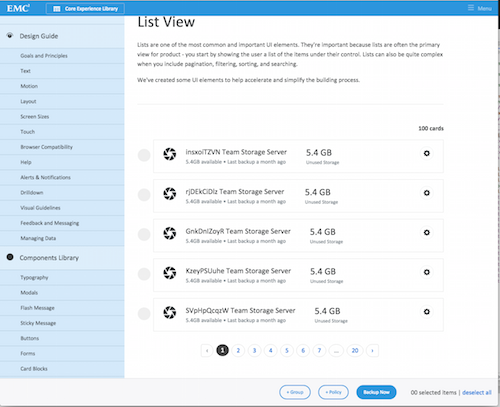
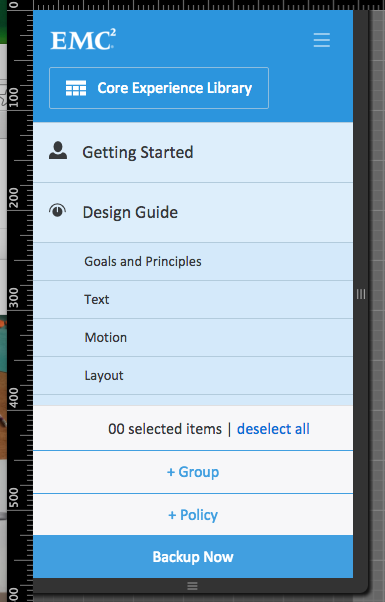
I joined Maginatics, an enterprise cloud storage startup, as the sole UX engineer. The product, MagFS, was a multi-VM software system which was installed and managed using a web-based management console. I built the management console using Ruby/ Rails/ jQuery.
When designing features, I typically met with a product manager and other engineers to understand how the feature worked and what the primary user actions would be. I sketched UI views on paper or on the whiteboard, refining them until we had a design that was complete enough to start building with. Designing the UI with the engineers also helped define what APIs would be needed for the feature.
Depending on my workload in a given milestone, I was sometimes able to design and build a feature from front to back. For instance, I implemented the back-end business logic, APIs and the UI for the licensing feature, including a license generation tool.
A key component of the MagFS cloud file system is the native Windows/Mac/Linux client agent. It was responsible for disintegrating, re-integrating, and encryption of the files as data traveled to and from cloud storage. I designed and wrote the Windows trap application used for configuring end-user settings for the product ( C#/ WPF )
Maginatics was acquired by EMC in 2014.
Click for more detail.


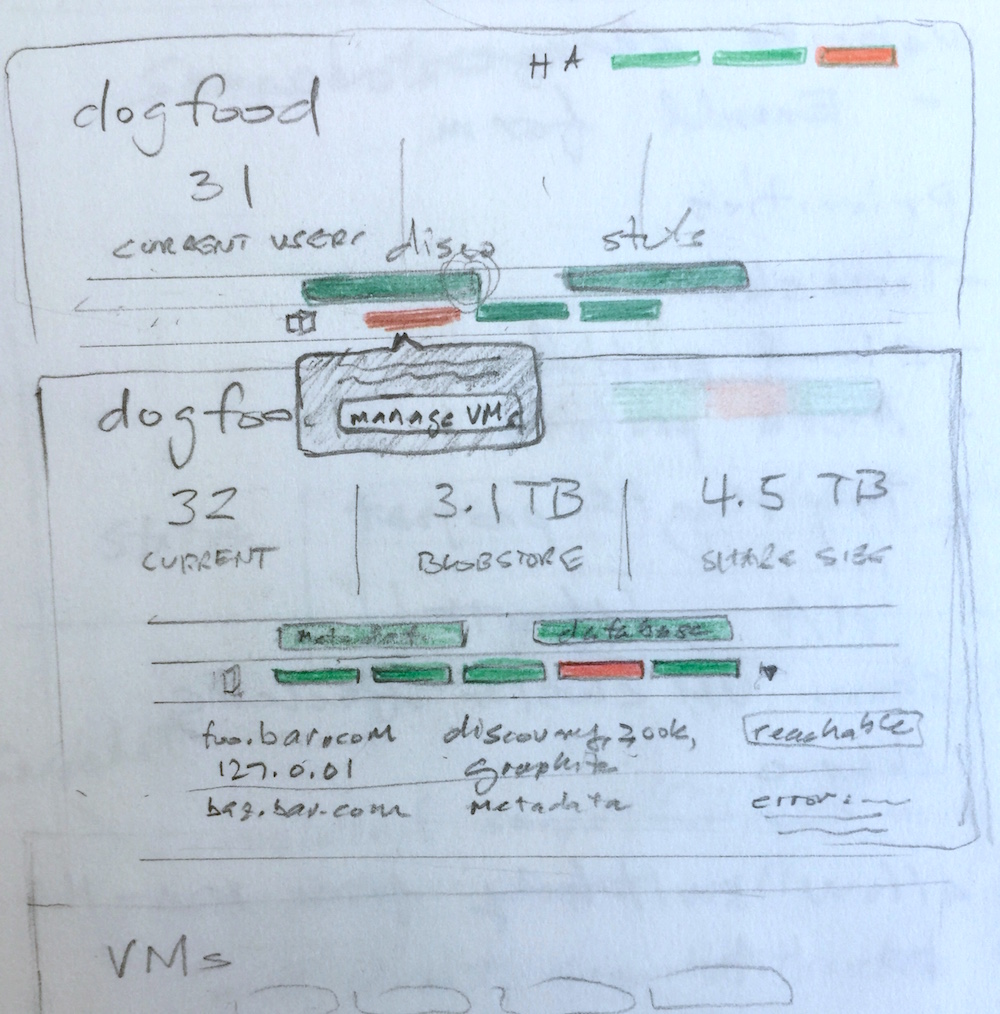

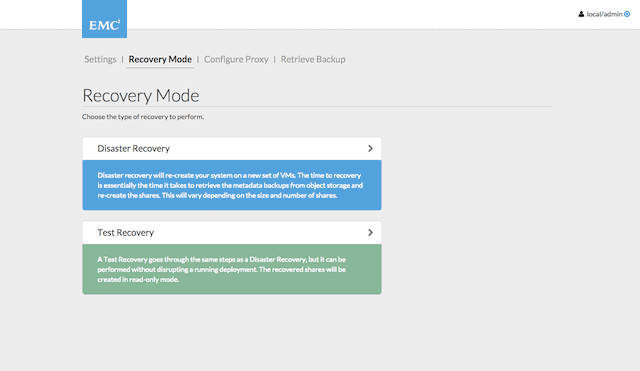
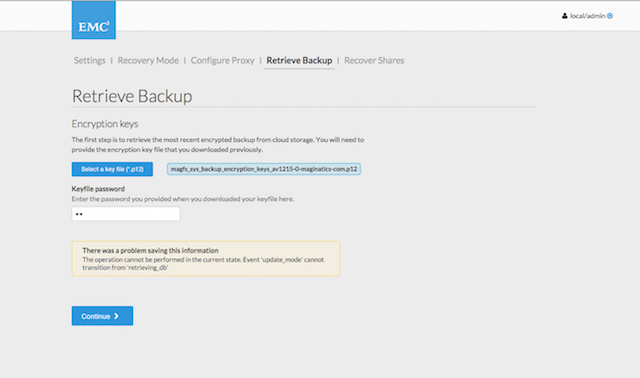

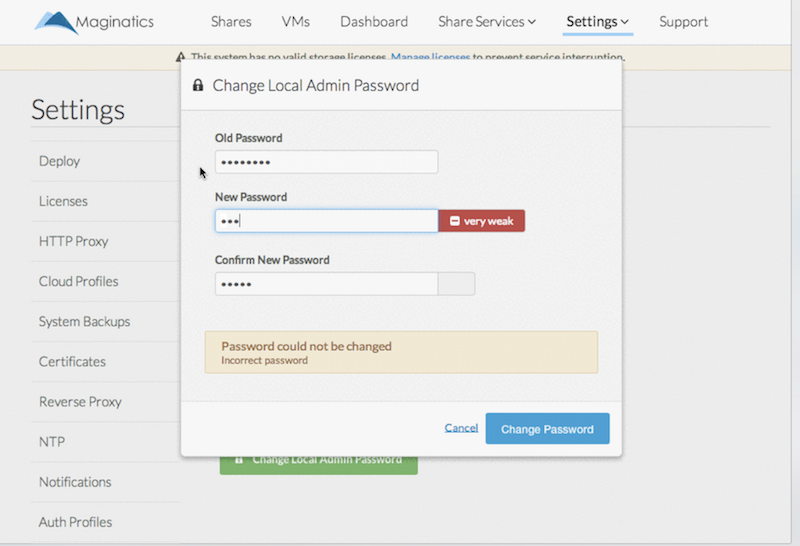
Beyond work on the company's product, I created several internal tools for the sales and engineering teams.
Maginatics.com. At the same time we were building the product and preparing for its
release at VMWorld, I built the external marketing web site. Both the product and the site
had to be ready on the same day so as you can imagine, it was an intense time. Thankfully, I was able to
recruit a friend away from his startup ambitions to join me in building the web site.
Ruby/
Rails
(I'm still trying to find screenshots of the site. It was taken down after the acquisition.)
Phone-home system. After customers began deploying systems, we needed to be able to monitor system health in order to provide proactive support. With another engineer, I designed and built a phone-home system that receives nightly updates from deployed systems and a UI for displaying and searching deployment data. We built it using Rails and MongoDB.
Client performance visualization. The Mac/Windows native client for MagFS records performance data internally. I created a web-based client performance UI that extracts performance data and displays it in real-time as the client transfers files. This was useful for identifying bottlenecks and expensive operations. ES5 Javascript
Reseller Portal. Soon after we started working with sales resellers, we needed an inexpensive system to manage sales leads so I built a reseller portal you see below. Ruby/ Rails
Click for more detail.
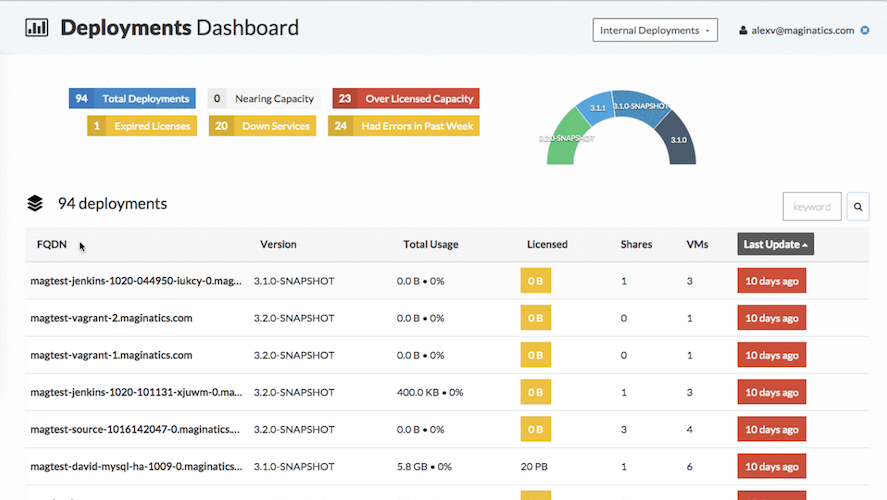

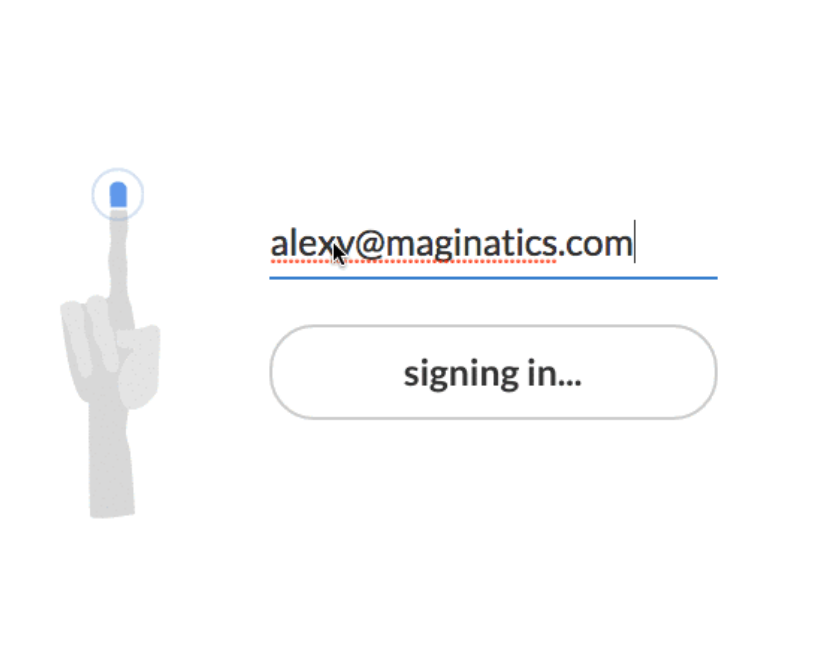
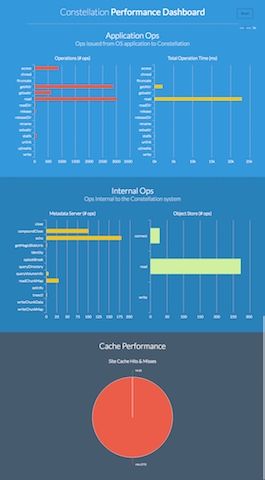


In 2010, HP launched a new organization to build a competing product to Amazon Web Services. This included an object store to compete with Amazon S3 and a compute stack to rival EC2, all based on Openstack.
I was on HP Cloud's front-end team for about a year, where I wired up billing UI views (like those below) to the API, and wrote the integration with Salesforce, which helped the support team track tickets. And I wrote the API integration with our billing vendor, Zuora (Ruby/Rails).
Click for more detail.
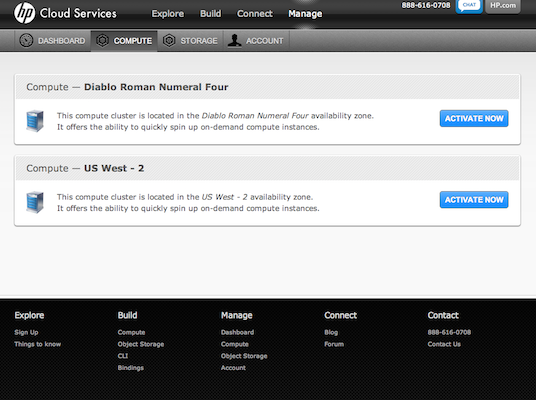
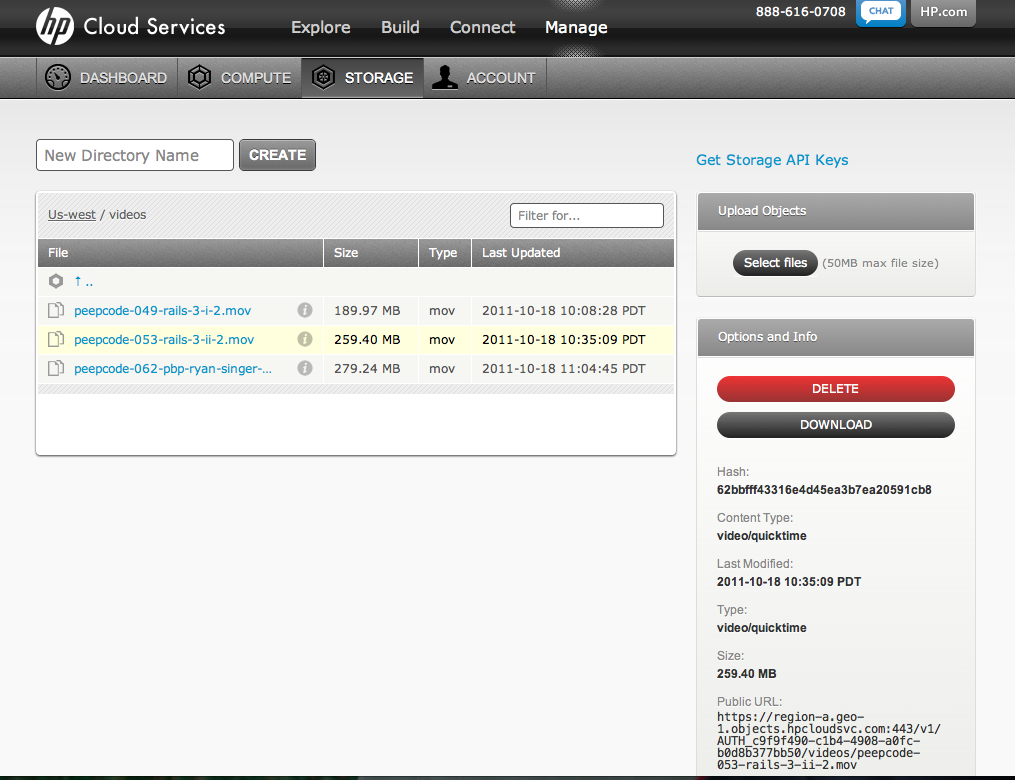
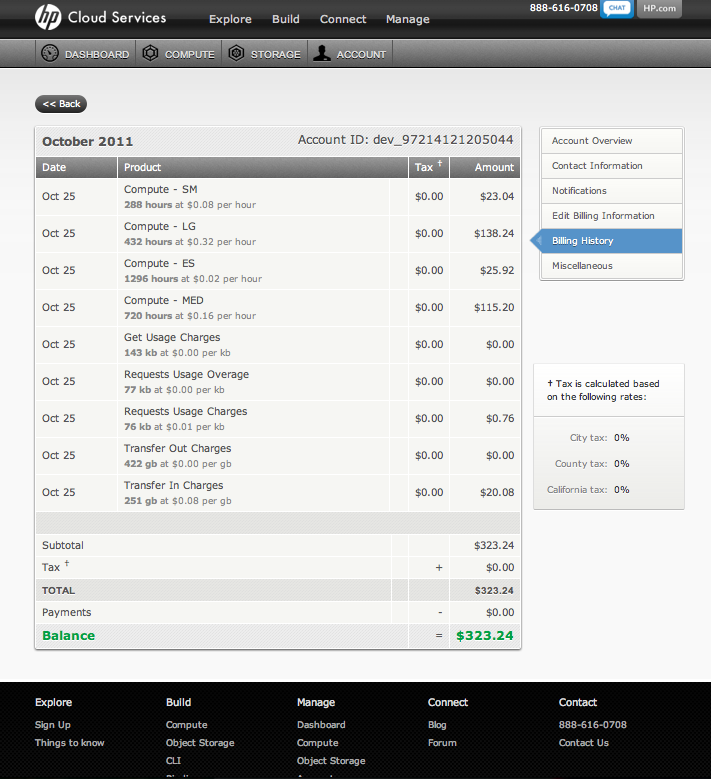

In 2008, I launched a video sharing site at HP that briefly made headlines in the technology press. It was one of the most significant projects I've worked on so far (the other being Maginatics).
At the time, video was taking off on the web, YouTube was a new hit, social media was exploding, the iPhone had just been released, and HP wanted in on the game.
I was working as a researcher/engineer in a video streaming and compression lab at HP Labs. A colleague, April, and I had recently teamed with a product group to build a prototype of an idea I'd been thinking about — conversation threads using short video clips. After pitching the prototype to a group of HP senior staff, we were given funding to hire a team and launch an HP-branded web product.
Within weeks, we had a program manager and had hired a marketing consultant, and two junior engineers. April and I designed about twenty UX views for the site and then contracted a design firm to implement the visuals. We performed user interviews in a studio to validate the idea of video conversation threads. We performed eye-tracking heat-map tests on the UX designs to observe how people interacted with the views. I architected and built a multi-VM system on Amazon Web Services, following an escalated battle with IT, who objected to the use of such an unproven cloud system. Finally, we wired up the pages and wrote the business logic using JSP, Java, POJOs, MySQL, and Tomcat. We used Flash Media Server to record streaming video from webcams and playback video. And we used ffmpeg to transcode uploaded video and extract thumbnails.
Gabble ran for about three years and was popular with classrooms and people separated by time-zones, such as families and distributed work teams. Was it a commercial success? No. Tens of thousands of daily actives doesn't move the needle at a company the size of HP. But for me personally, it was a golden education in building and shipping a web product.
Click for more detail.
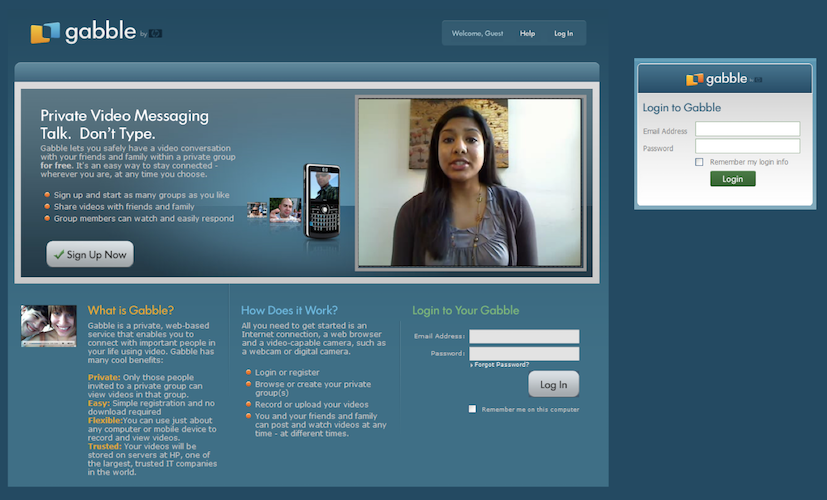
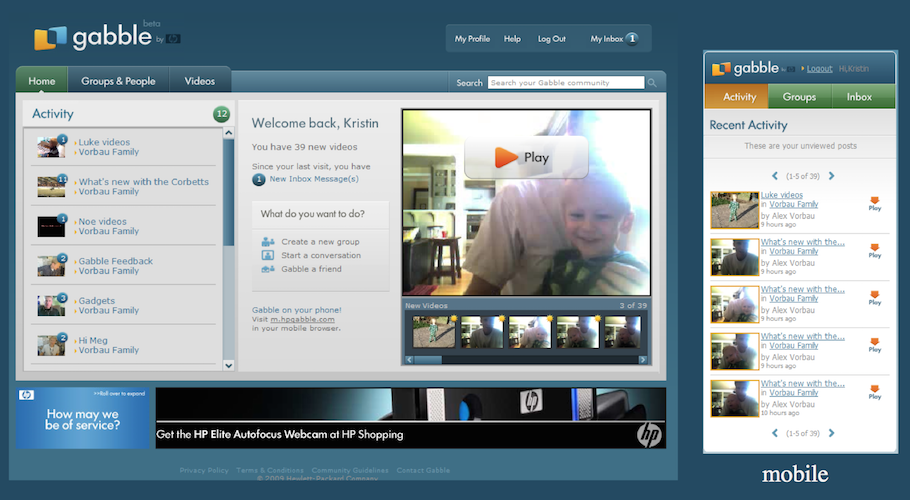
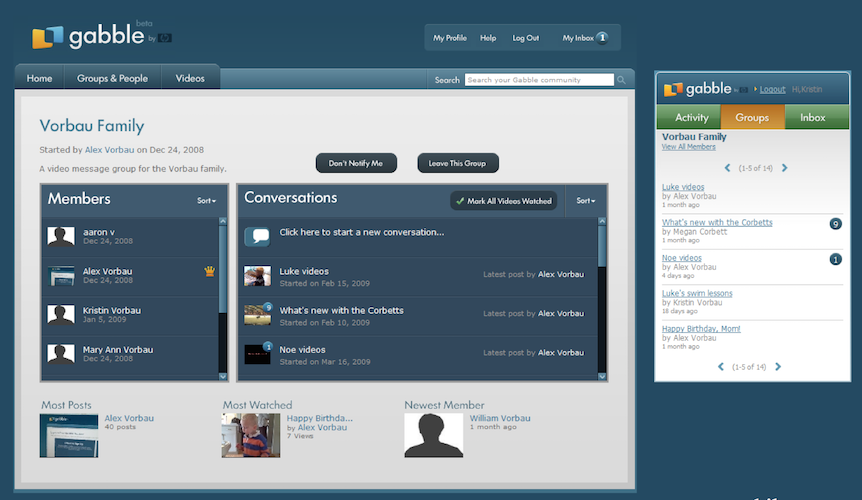
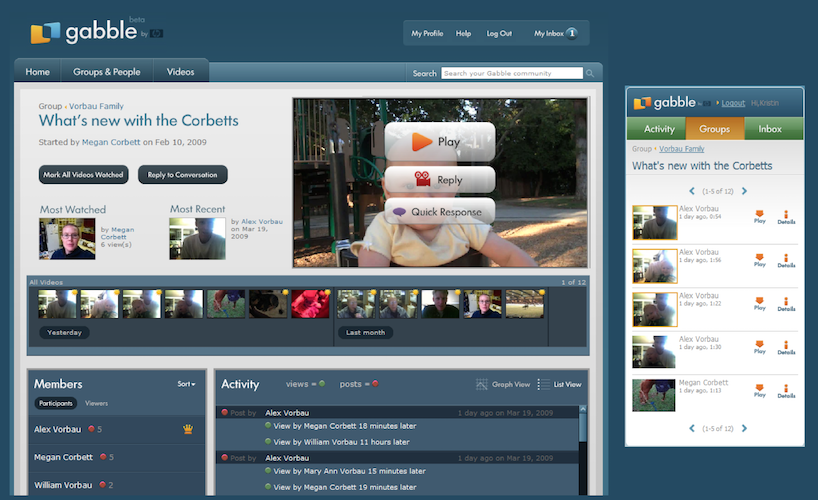


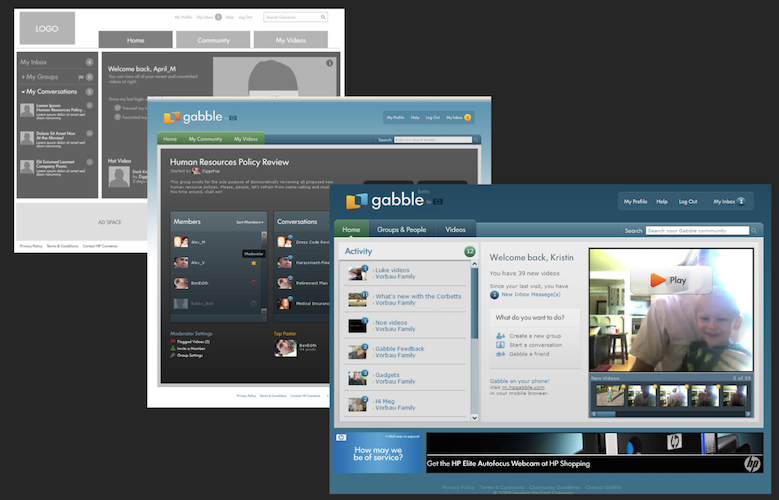
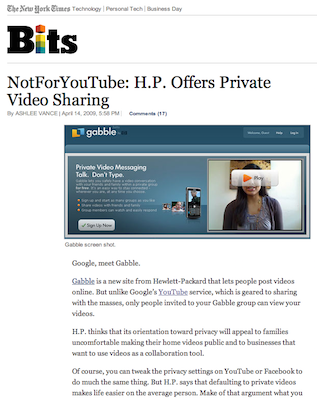
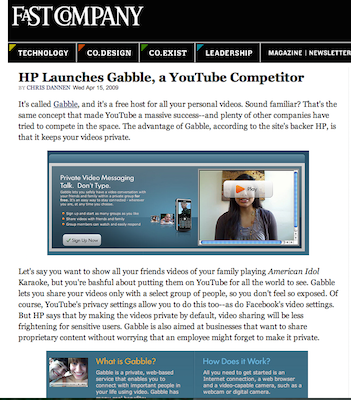
placeholder description text